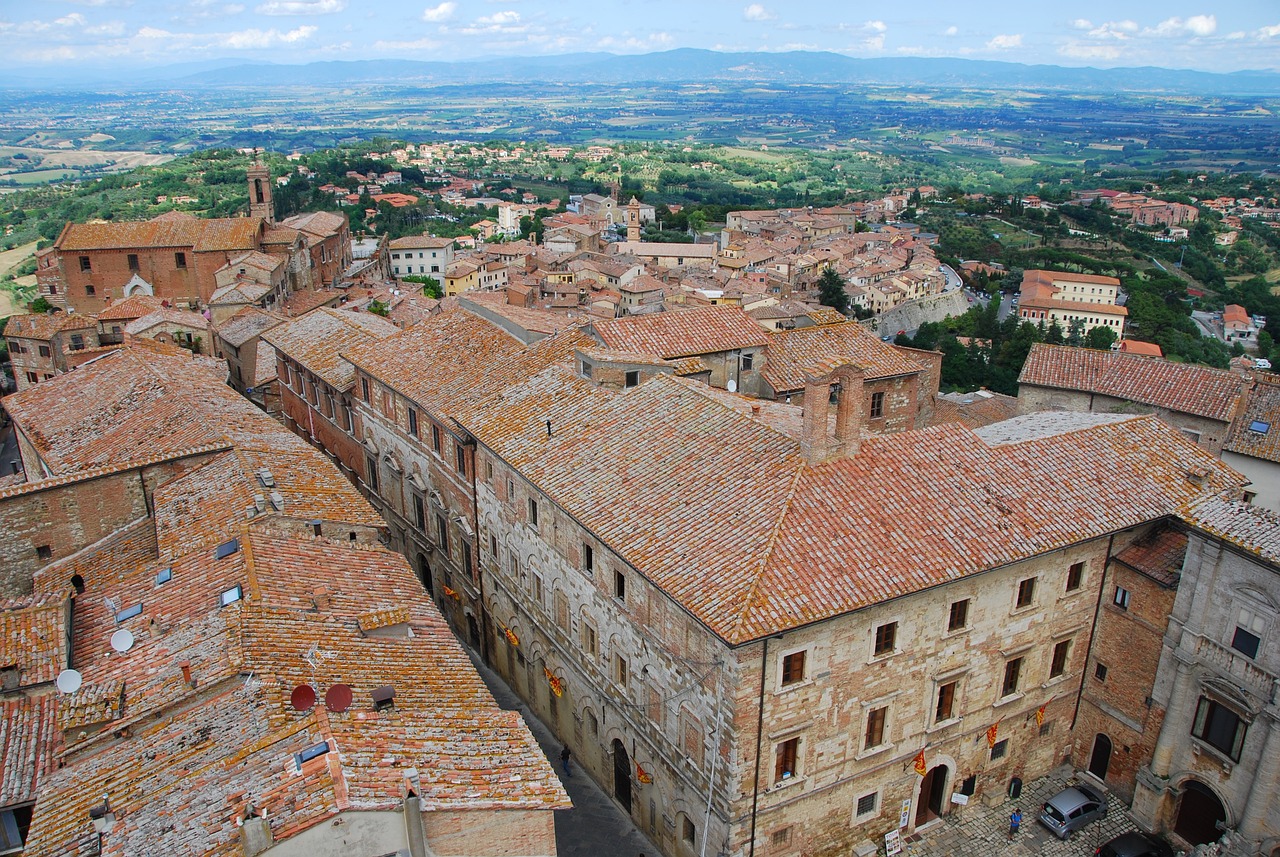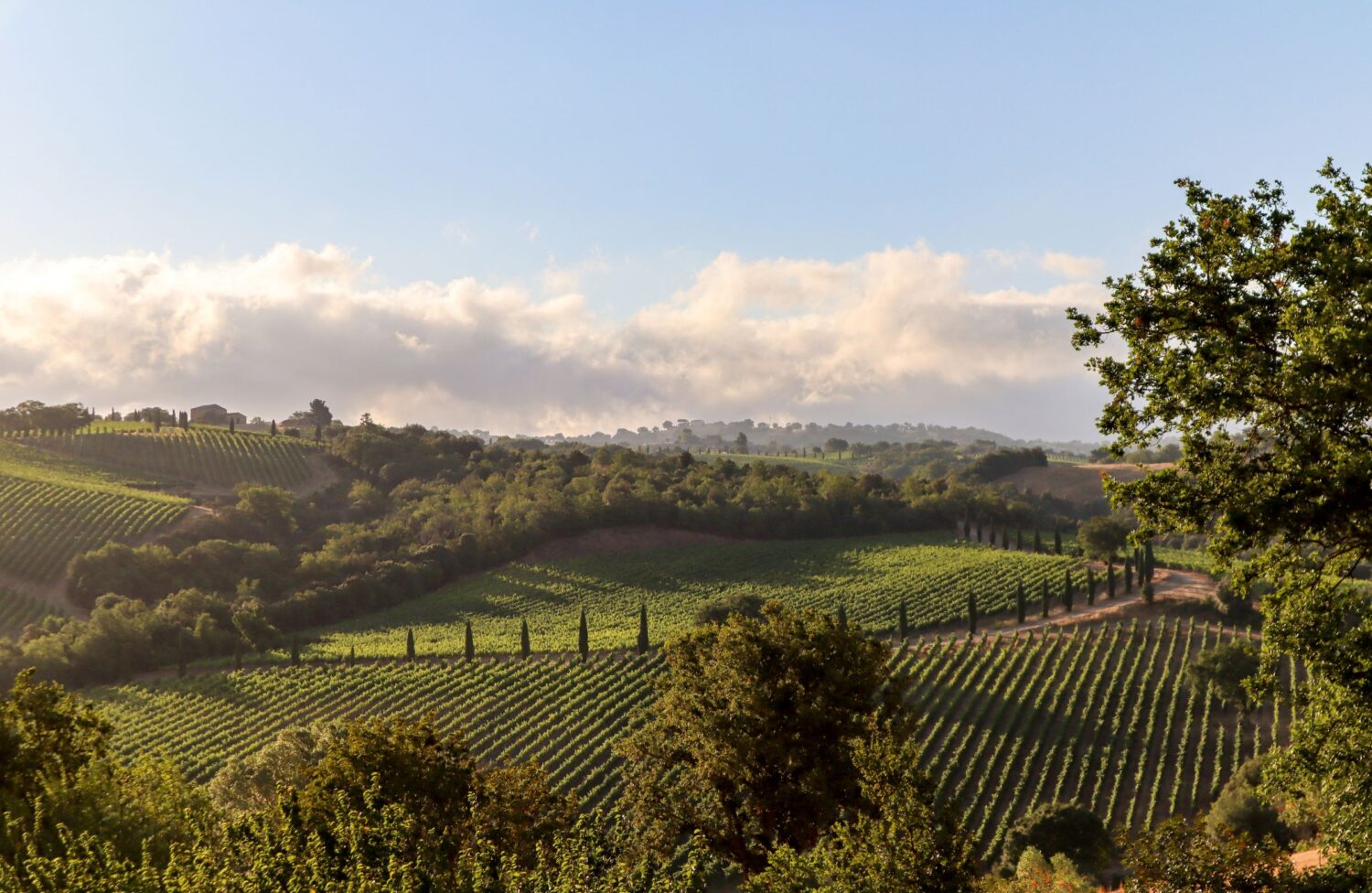Reading time: 7 minutes
Whether you have daydreamed about it, “pinned” it, or actually been there, most of us have a pretty clear picture by now of what Tuscany looks like. Montepulciano encompasses virtually every single aspect of what one could say is “quintessential Tuscany”. Not far from Siena, perched on a rock, this medieval town of rare beauty is characterized by elegant Renaissance buildings, ancient churches, and splendid squares. The breathtaking surrounding landscape of the Val d’Orcia and the Valdichiana (also written Val di Chiana) are postcard-perfect. In this article, we’ll give you a simple guide to seeing the best of Montepulciano in just one day. Andiamo!
Montepulciano was an important Etruscan city that, according to legend, was founded by Etruscan King Porsena and later, a Roman garrison. After the fall of the Western Roman Empire, it became a Lombard religious center.
The Historic Center
No visit to Montepulciano is complete without a leisurely stroll up the Corso, or the city’s main street. It begins at Piazza Savonarola with its majestic Marzocco lion statue, representing Florentine rule, and climbs through the town where you will see everything from Renaissance palaces to decor constructed from Etruscan ceramics. It ends at the magnificent Piazza Grande, the very heart of Montepulciano.
This is where the city’s main events take place, including the Bravio delle Botti, which is held every year in August. Piazza Grande is also where the sequel to the Twilight saga, New Moon, was filmed.
Everywhere you turn, you will notice both Sienese and Florentine influences, evidence of Montepulciano’s wavering alliances over the centuries.
Most people don’t realize that Montepulciano sits at 600 meters above sea level (almost 2,000 feet). If this piazza reminds you of Florence, you would be correct because the Town Hall is a mini-version of the famous Florentine landmark, Palazzo Vecchio. Make sure to take the stairs to the top for views that reach as far as Trasimeno Lake in Umbria, the spectacular Val d’Orcia, and Tuscany’s Monte Amiata.

You can also gawk at the sixteenth-century Contucci Palace (see next paragraph) and at the Duomo. This very simple travertine cathedral dates to the sixteenth and seventeenth centuries and was designed by the famous architect Ippolito Scalza from Orvieto. You may notice the facade was left unfinished and just when you are judging the interior bland and austere, you will be taken aback by the altarpiece. A triptych (three panels) masterpiece of the Assumption by the great Taddeo di Bartolo of the Sienese School. In the chapels, there are also works by Michelozzo and Della Robbia.
Tasting Montepulciano’s “Noble Wine”
While in Piazza Grande, make sure to visit the Contucci Palace and cellars. The Contuccis are one of the oldest families of Montepulciano with records dating back to the year 1000. They also have a wine bar where you can taste their prized Vino Nobile di Montepulciano DOCG comprised of a minimum of 70% Sangiovese grapes along with some of Tuscany’s best cured meats and cheeses.
Did you know that Vino Nobile (literally, “Noble Wine”) of Montepulciano was the very first wine in Italy to earn the DOCG label (in English, Controlled and Guaranteed Denomination of Origin)? Of course, Contucci is not the only wine cellar you can tour in the area. You can taste both Vino Nobile and Rosso di Montepulciano DOC in many other cellars in the historic center including Crociani, Gattavecchi, Fattoria Pulcino, Talosa, Fanetti, De’ Ricci, Ercolani, and Fanetti.


The Medici Fortress and Gardens
Continuing our tour, from Piazza Grande you can reach the Medici Fortress and its lush gardens. It is also open to tourists and is the annual location of a festive Christmas market. Just past the fortress, there is also the Church of Santa Maria dei Servi (originally dating to the year 1200) along the Via di Collazzi.
Temple of San Biagio
If the weather is nice and you are up for a walk, you can reach the Tempio di San Biagio in just fifteen minutes. This church sits alone in the lush hills surrounding Montepulciano and is one of the area’s most photographed landmarks. Designed by Antonio Sangallo and erected in the mid-1500s, this Renaissance church has a fantastic dome and a travertine facade. Its construction is linked to an apparition of the Virgin Mary together with Saint Francis in the year 1518 by a local farmer.

Hot Air Balloon Rides
If you are not afraid of heights, then a hot air balloon tour over the scenic countryside is a once-in-a-lifetime experience. Departing from Montisi (just 30 minutes from Montepulciano), many of the flight itineraries take guests over the Val d’Orcia and the Benedictine Monastery where part of the English Patient was filmed, Sant’Anna in Camprena.
Natural Hot Springs
Another option is trying out any of the area’s many natural hot springs which were known even in Etruscan times for their curative properties. One of the most well-known is the San Casciano dei Bagni area which boasts forty-two natural hot springs at an average of 40°C. More info here

Tips
Montepulciano is extremely popular with both Italian and international tourists and can get very crowded during peak tourist season, especially in the months of June, July, and September. There is no train station here, but as of August 2023, the region of Tuscany has made it much easier to get here! On the Trenitalia website, you can now enter Montepulciano Centro as your destination (or departure) station and it will automatically allow you to purchase a combined train/bus ticket. Here is the link.
For even more information about this beautiful city, visit the official tourism website, Montepulciano Living.



